The Gyrfalcon (Falco rusticolus) is one of the fastest flying bird species in the world. It is a magnificent bird of prey that inhabits the Arctic and subarctic regions of the Northern Hemisphere. With its regal appearance and incredible hunting prowess, the Gyrfalcon has captivated the attention of bird enthusiasts and researchers alike.
Gyrfalcon images
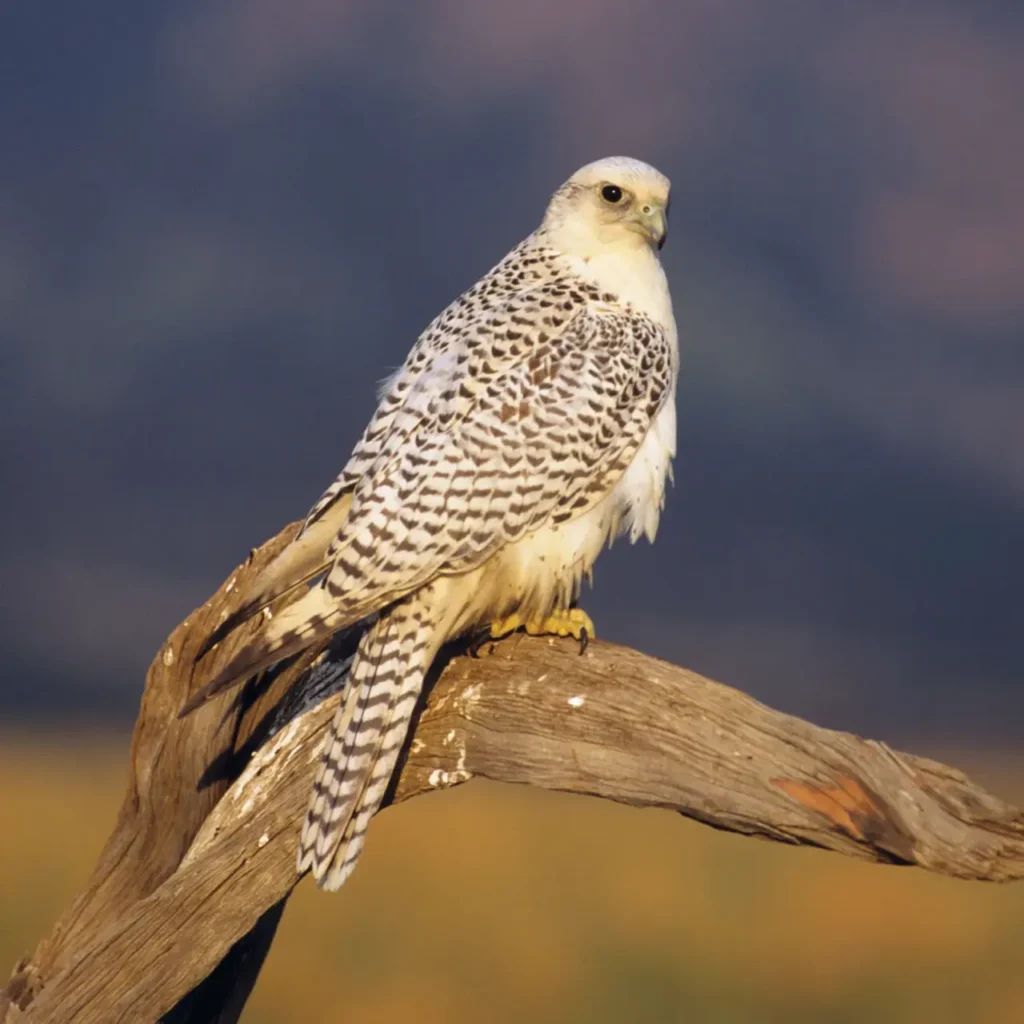

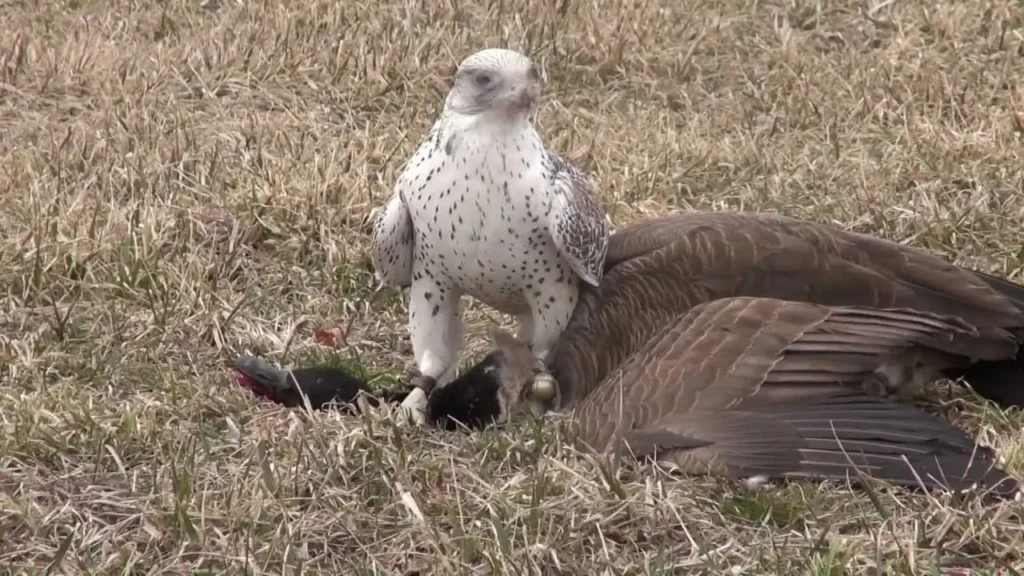
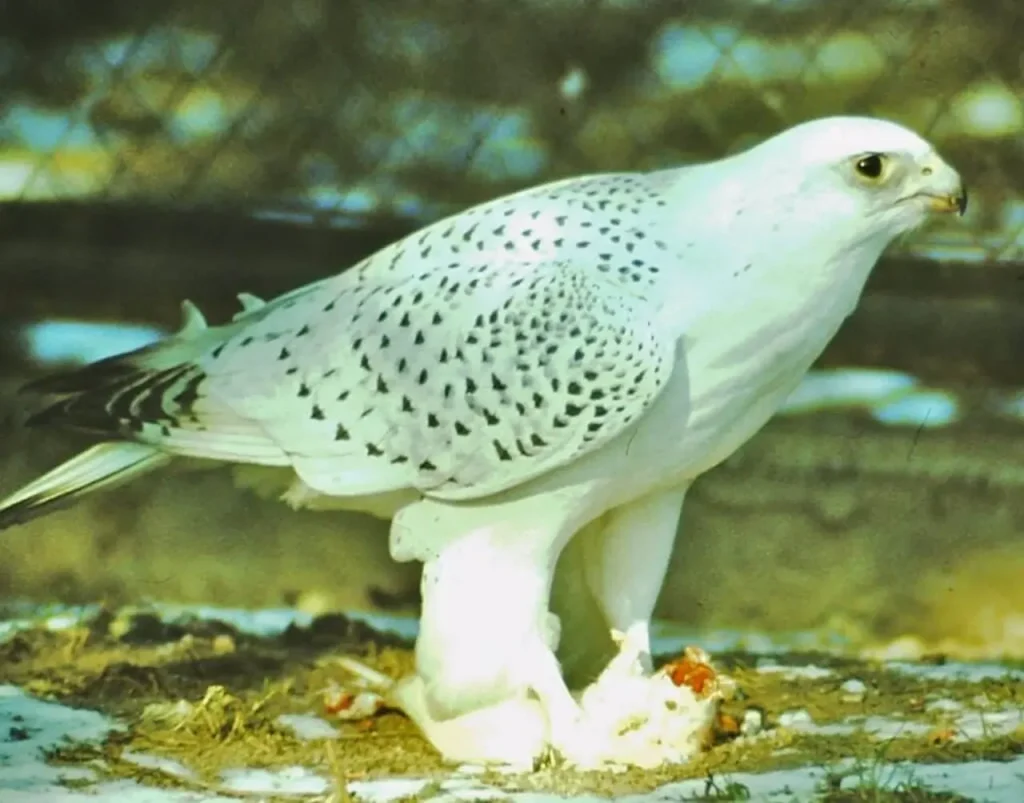
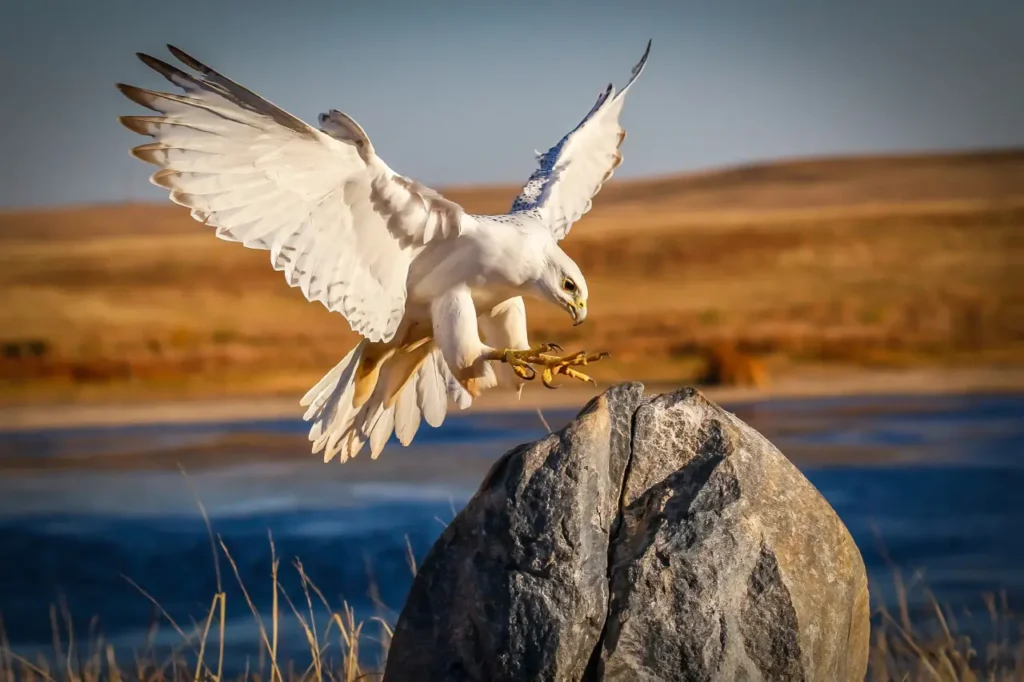
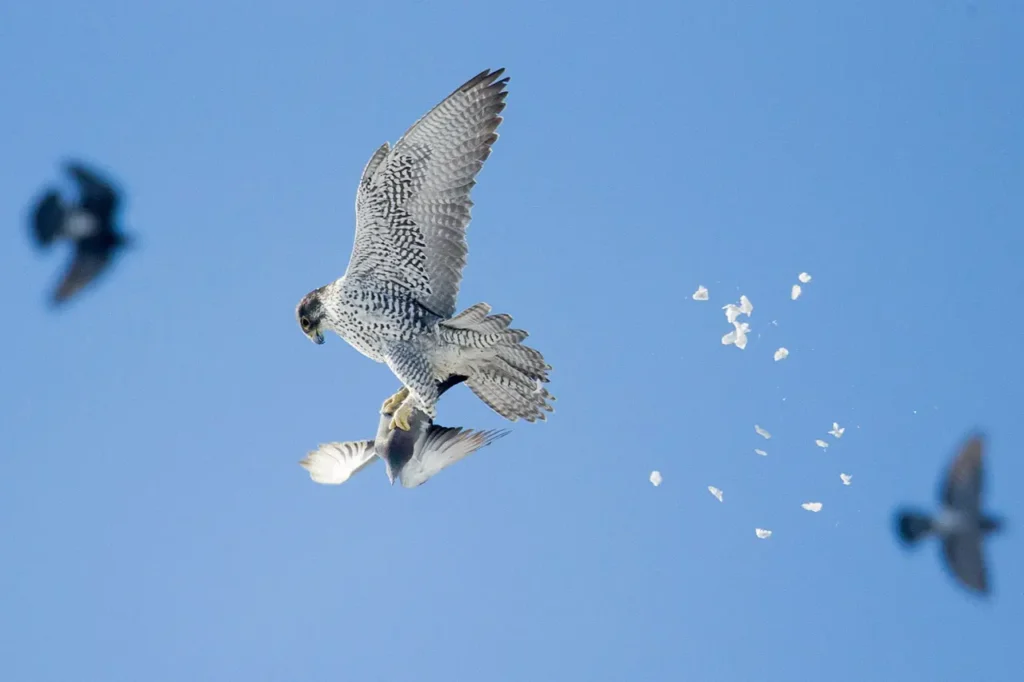
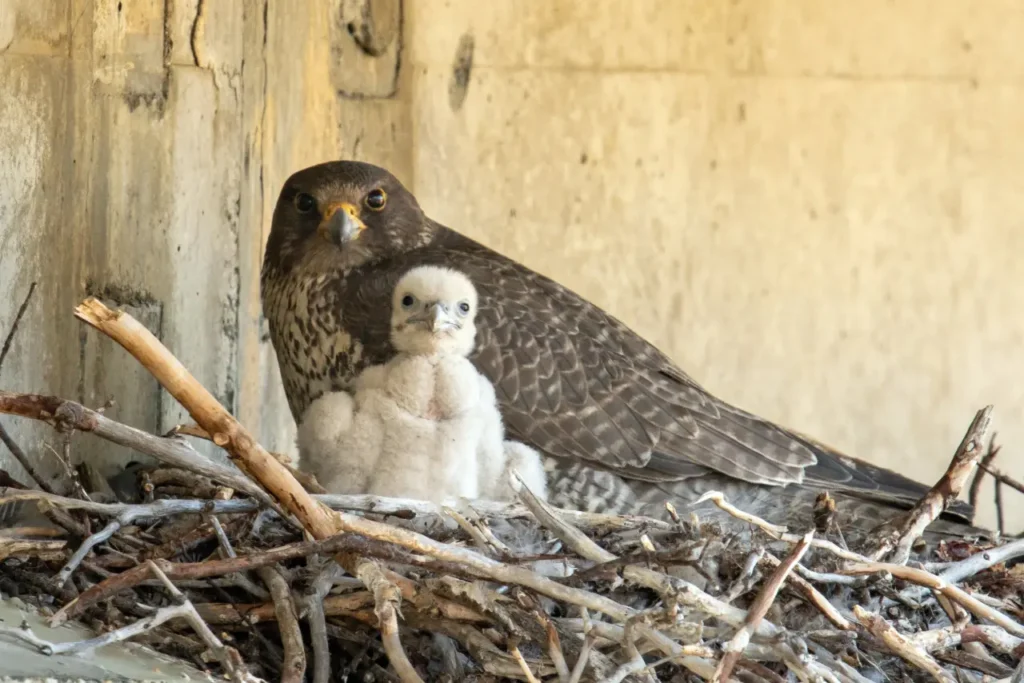
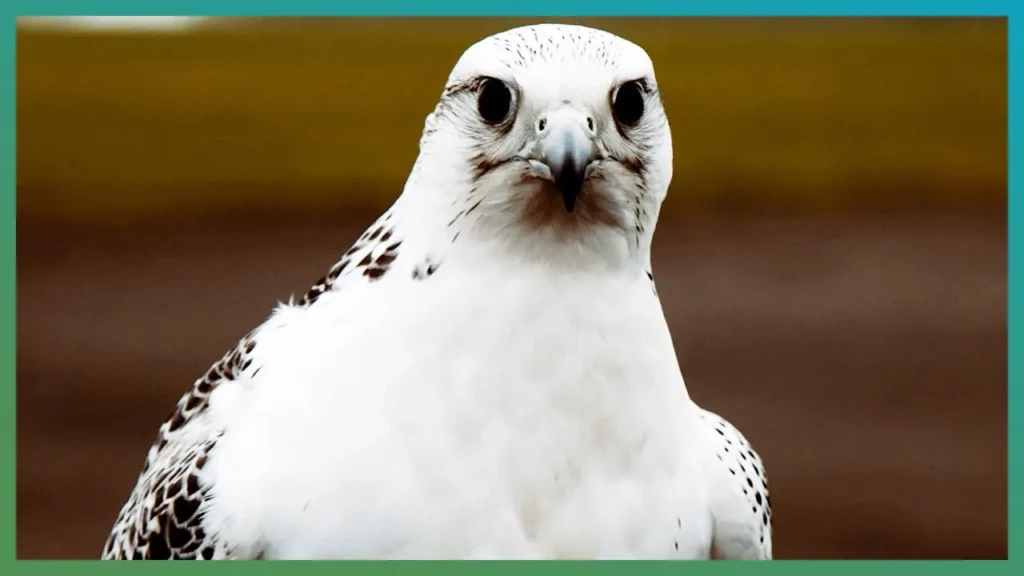

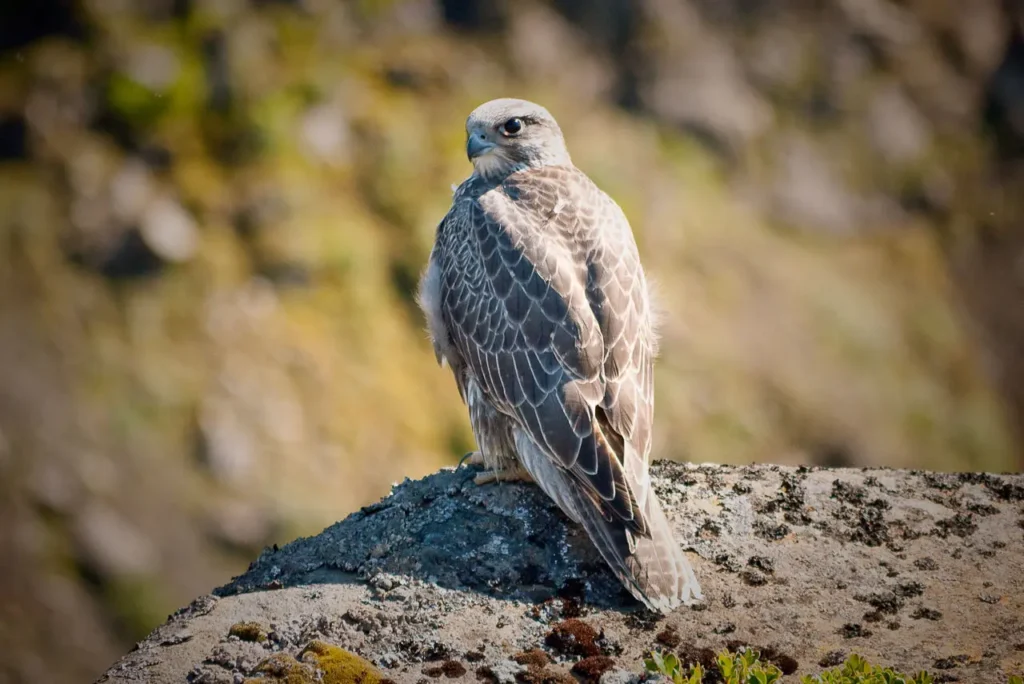
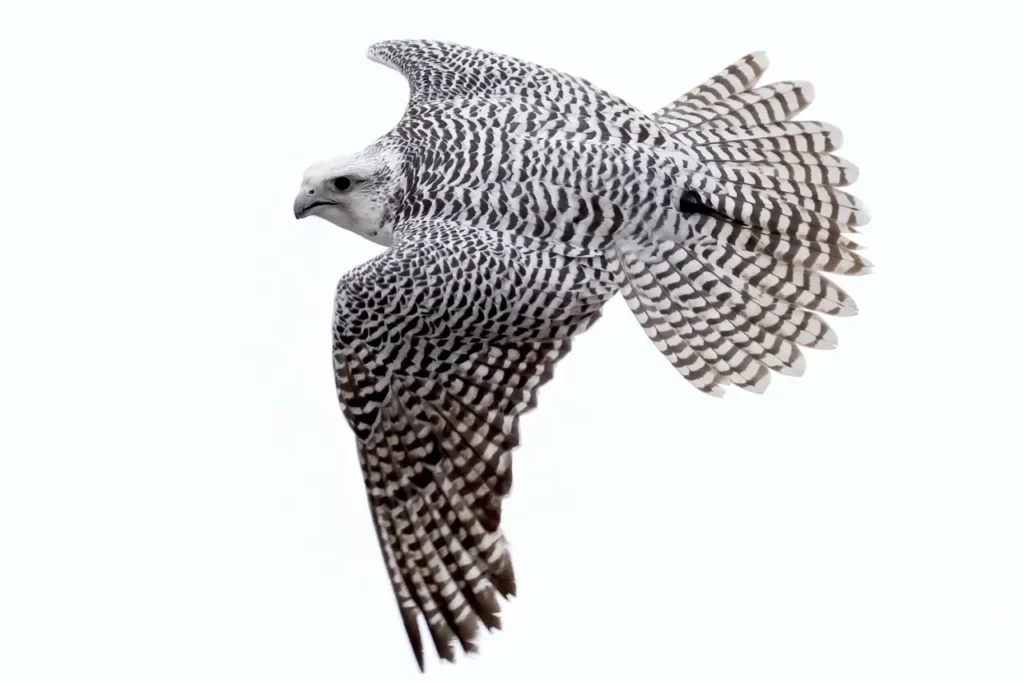
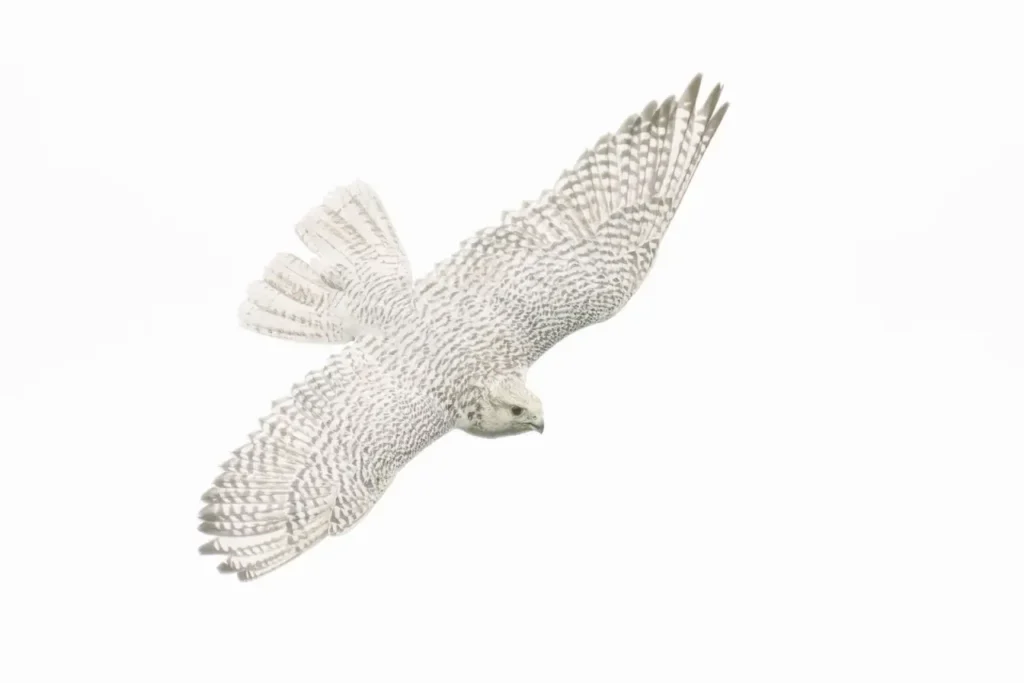
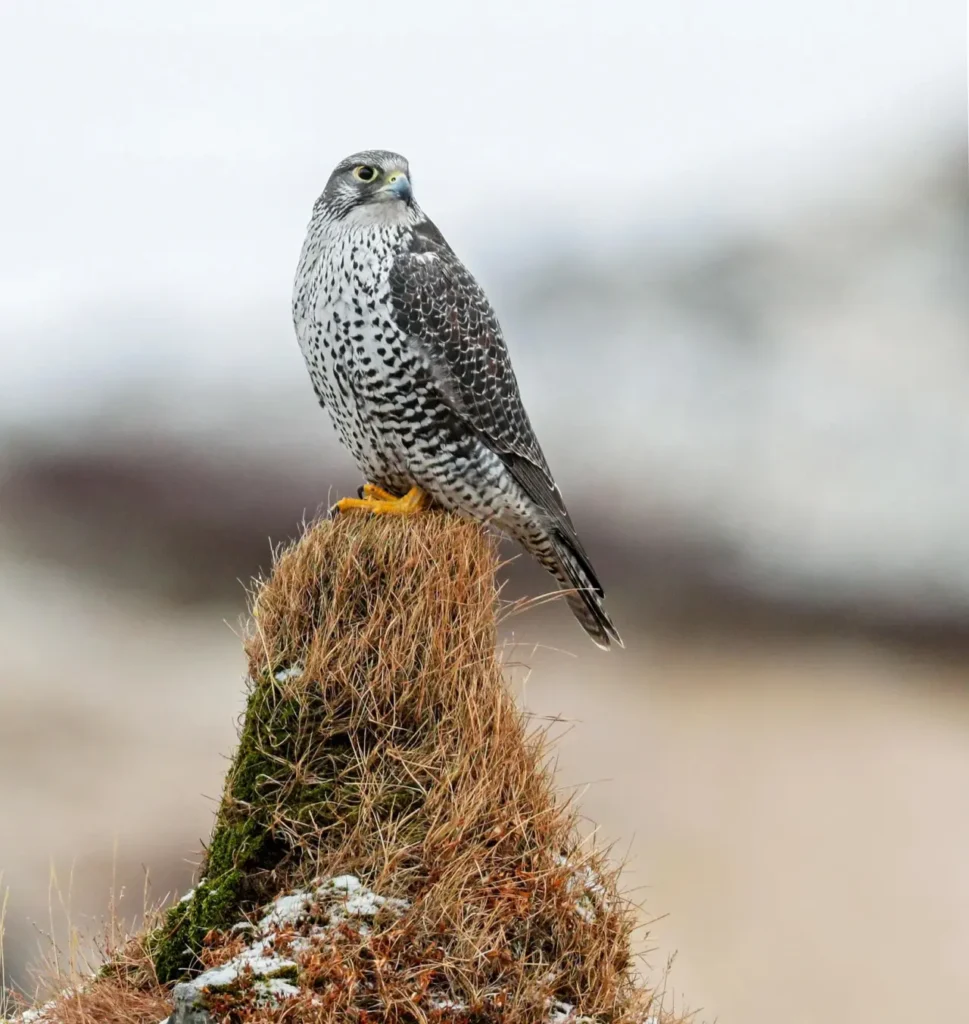
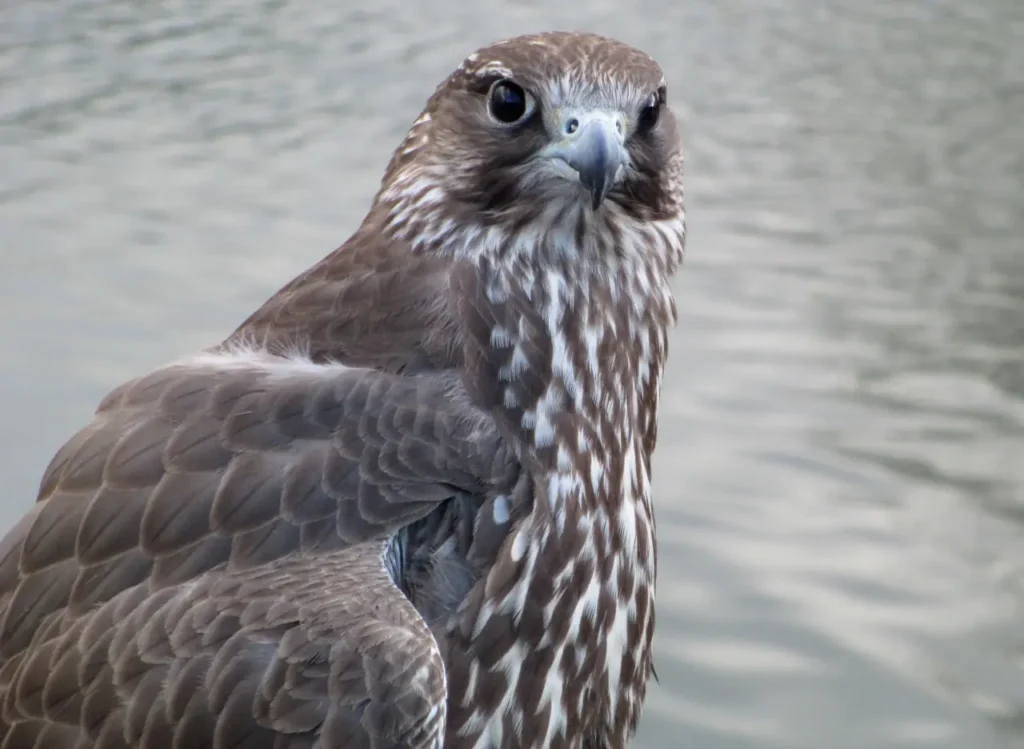
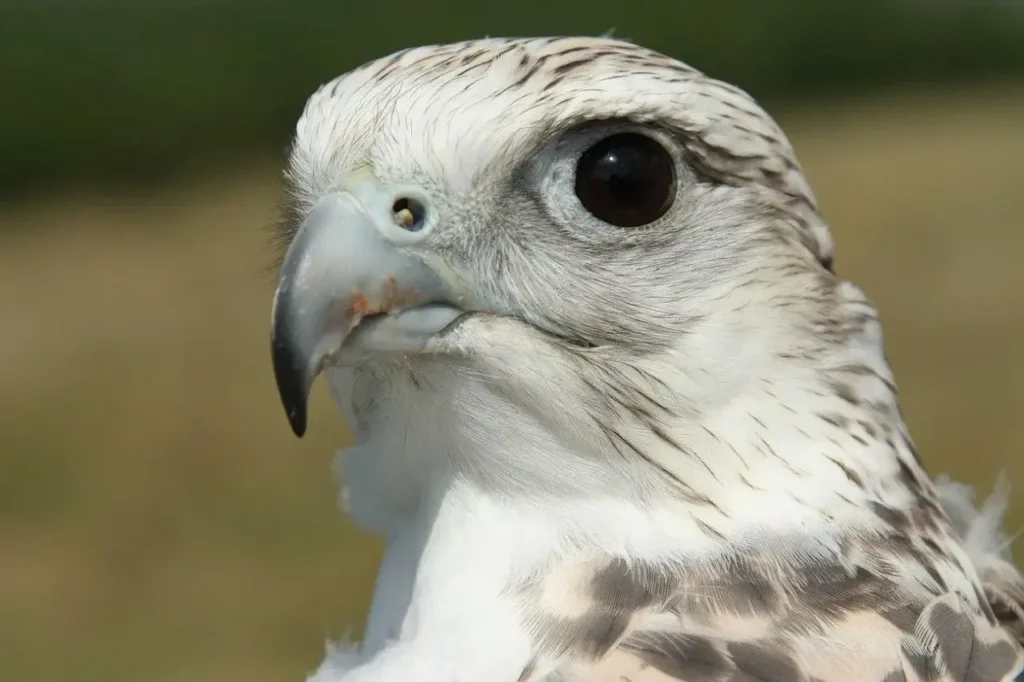

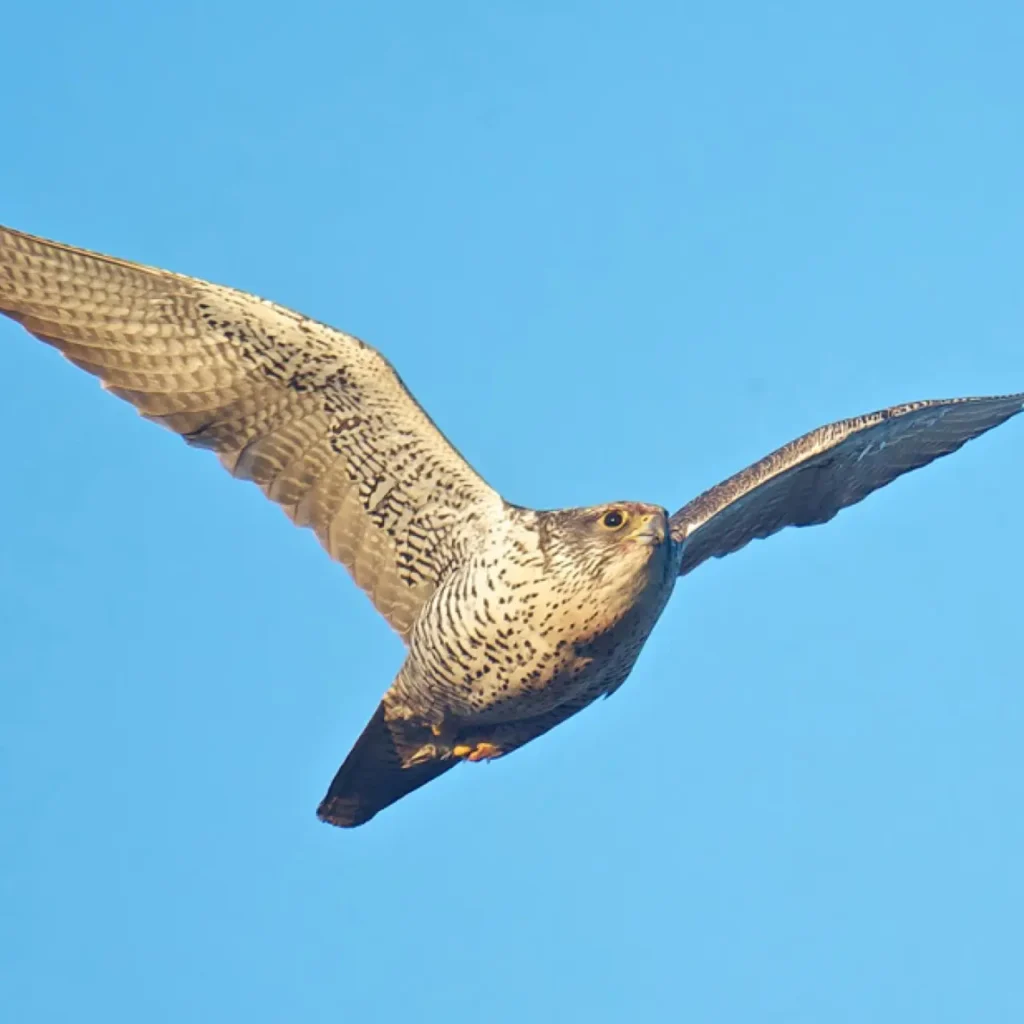
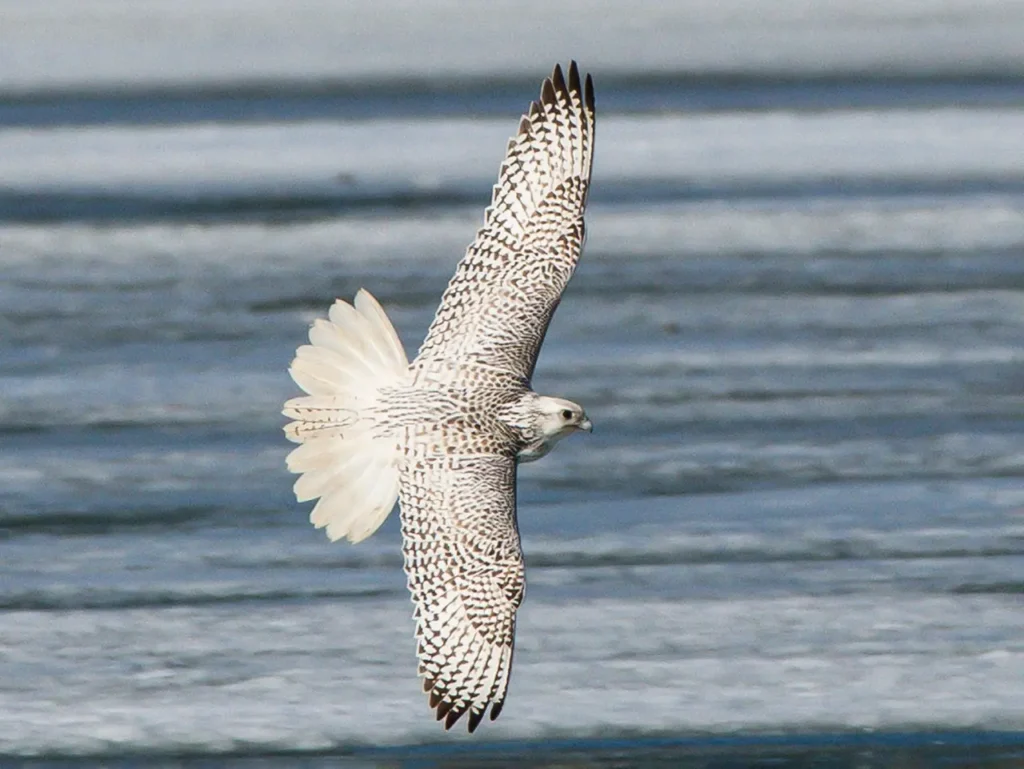
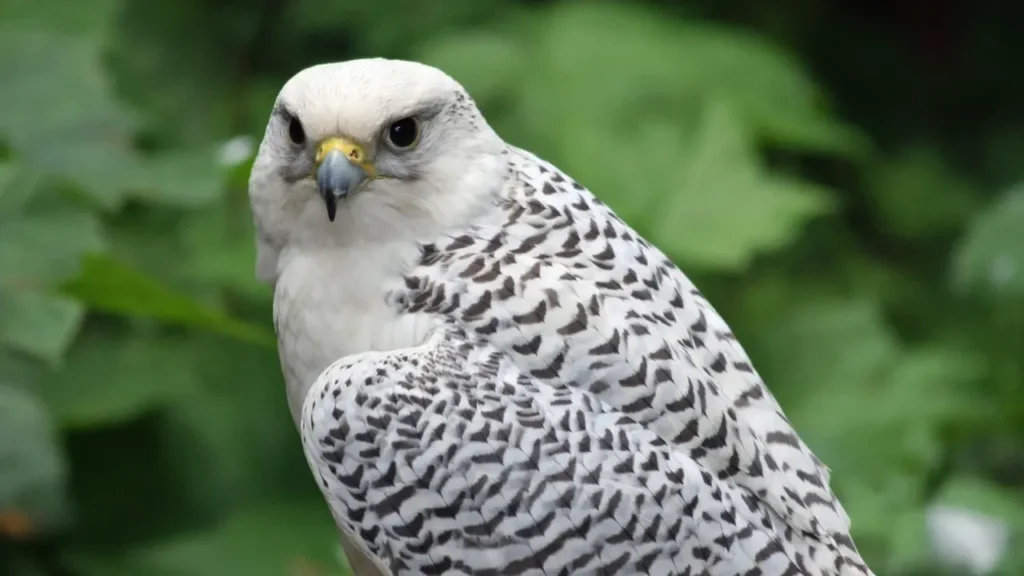
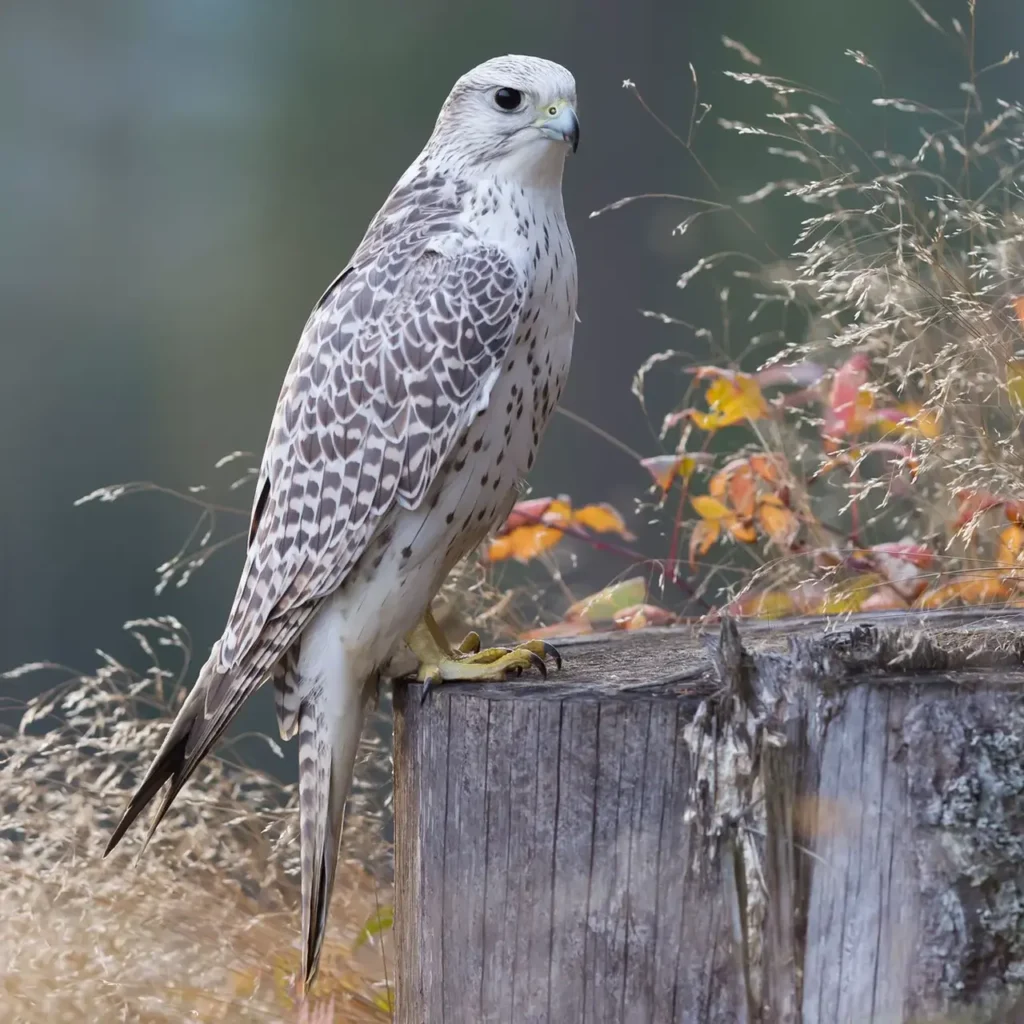
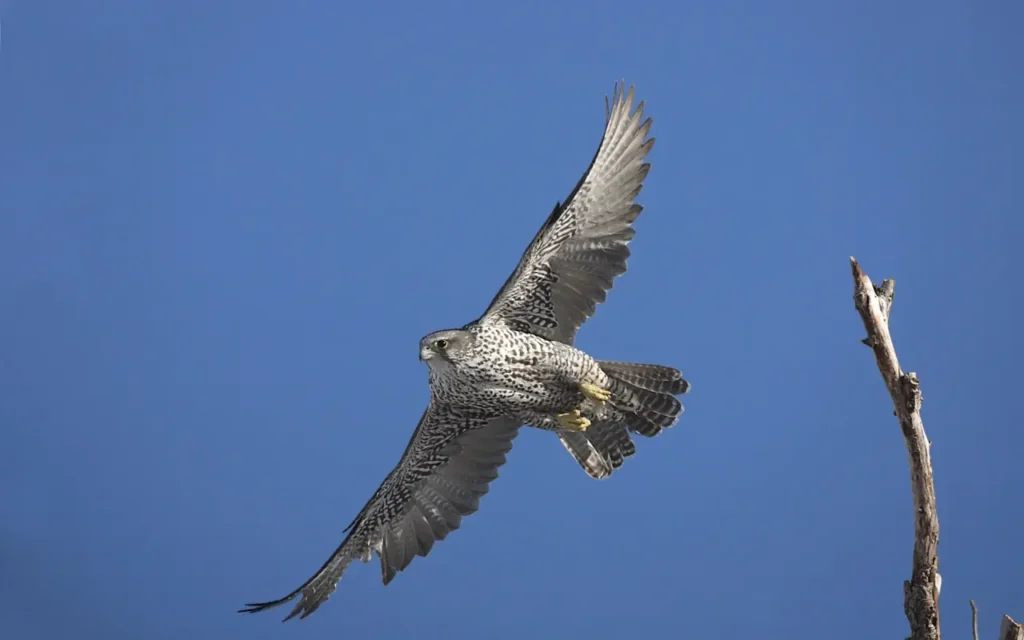
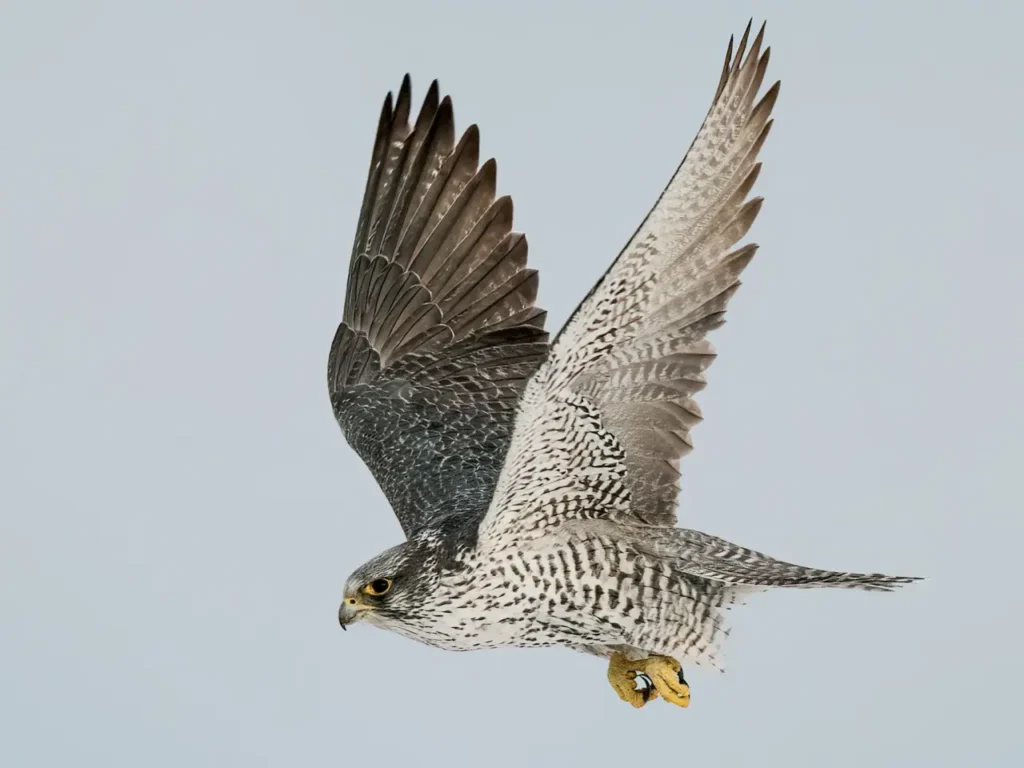
Let’s delve into the fascinating world of this majestic raptor.
Physical Characteristics
The Gyrfalcon is the largest falcon species in the world, with a wingspan reaching up to 150 centimeters (59 inches). It displays significant sexual dimorphism, with females being larger and heavier than males. Their plumage varies greatly, ranging from pure white to dark brown, with intermediate variations of gray, black, and brown. This color variation is believed to aid in their camouflage against their Arctic surroundings.
Habitat and Distribution
Gyrfalcons are well adapted to the harsh Arctic environment and can be found in the tundra regions of North America, Europe, and Asia. They nest on cliff ledges, using old raptor nests or creating their own scrapes on the ground. During the breeding season, these magnificent birds are known for their territorial behavior, defending their nesting sites fiercely.
Hunting and Diet
Gyrfalcons are formidable hunters, specializing in capturing avian prey. Their diet primarily consists of medium-sized birds, including ptarmigans, ducks, grouse, and even other raptors. With astonishing speed and agility, they perform breathtaking aerial displays while pursuing their prey. Gyrfalcons are known for their exceptional hunting technique called “stooping,” where they dive from great heights at incredible speeds to ambush their targets.
Conservation Status
The Gyrfalcon population is distributed across a vast range, and its conservation status varies among different regions. While some populations are considered stable, others face significant threats, including habitat loss, disturbance, and illegal hunting. The species is protected by international conventions and several countries have implemented conservation measures to safeguard their populations.
Cultural Significance
The Gyrfalcon holds cultural significance in many indigenous communities of the Arctic. It has been revered as a symbol of strength, power, and freedom. Historically, these birds were used in falconry, a practice that dates back centuries and involved training the falcons for hunting purposes.
In conclusion, the Gyrfalcon stands as a majestic symbol of the Arctic wilderness. Its striking appearance, impressive hunting abilities, and cultural significance make it a captivating species to study and admire. As we strive to protect and conserve our natural heritage, it is essential to recognize the significance of these remarkable birds and ensure their survival for generations to come.








